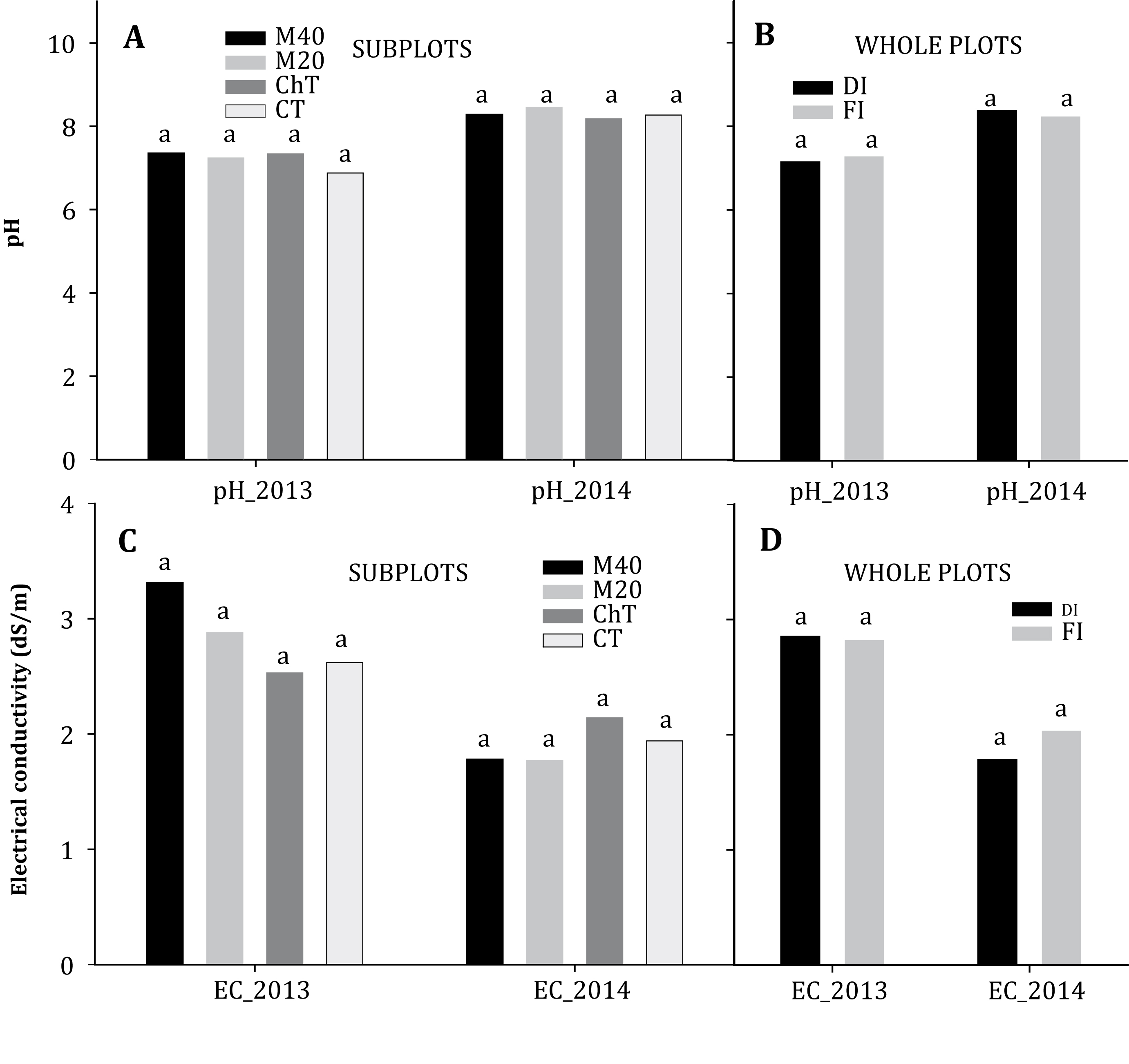Solarized manure and two irrigation methods on fruit yield of jalapeno chili (Capsicum annuum L. var. annuum)
Keywords:
fruit yield, fertilizers, nitrates, organic matter, evaporationAbstract
Increase of water use efficiency in crops through better irrigation systems and use of farmyard manure to fertilize plants and avoid contamination are needs in arid regions. The objective was to evaluate a jalapeño pepper crop with organic fertilization and two irrigation methods.This research was carried out at Gomez Palacio, Durango, Mexico, in 2013 and 2014. The experimental units were randomly distributed in a split plot design with four replications. Main plots were irrigation treatments and fertilizers were applied as split plot treatments within each irrigation treatment. Irrigation was applied with either a furrow irrigation system to apply 80% of the measured pan evaporation or drip irrigation set to deliver 60% of the measured evaporation. The drip irrigation treatment showed greater fruit yield than the surface irrigation (p0.05) and different in 2014 (p0.05). Soil pH and electrical conductivity remained unchanged among treatments in each year of the study. Drip irrigation had a positive effect in the fruit yield in spite of delivering a lesser amount of water. The solarized manure applied at 40 t ha-1 had the greater effect in the fruit yield in year 2 but not in year 1.
Downloads

Downloads
Published
How to Cite
Issue
Section
License
Aquellos autores/as que tengan publicaciones con esta revista, aceptan las Políticas Editoriales.










.jpg)




